| Photos may not be used or reproduced without written permission from the Environmental Consortium |
|
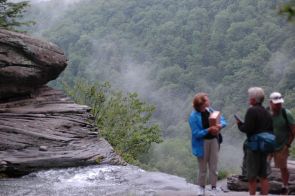 |
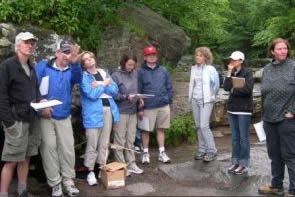 |
Elizabeth Hutchinson (Barnard College) taught
"Seeing the Catskills Through the Hudson River School" |
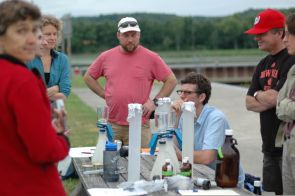 |
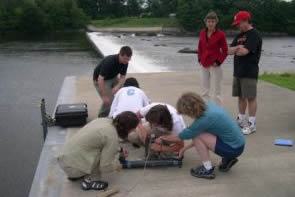 |
| Damon Chaky (Lamont-Doherty Earth Observatory) and Sandra Nierzwicki-Bauer (Rensselaer Polytechnic Institute) conducted a lesson in water sampling, contamination, and zebra mussels at Waterford Lock #2 (Hudson Riverscope site).
|
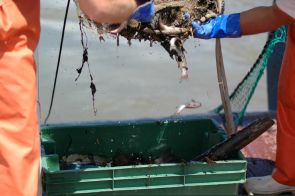 |
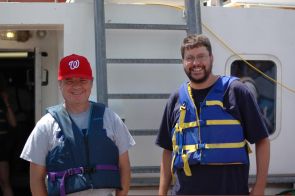 |
| Trawl results just south of Catskill |
Ted Eismeier (Hamilton College) and Brian Jensen (College of Saint Rose) |
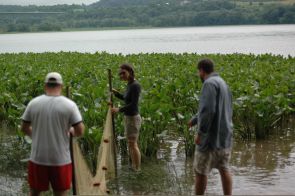 |
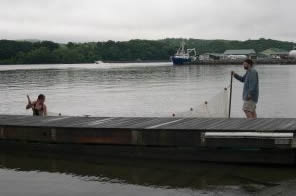 |
| Brian Jensen led a "Fisheries Biology" lesson. Seining in the Catskills yielded killifish, shiners, and anchovies which participants identified using key books. |
| |
|
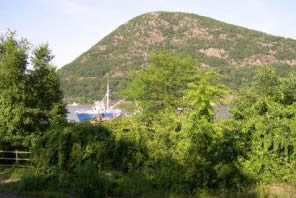 |
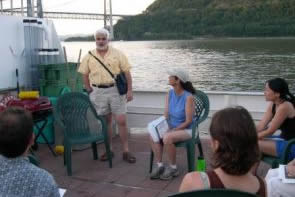 |
| Seawolf docked at Bear Mountain State Park |
Tom Lake, NYSDEC Hudson River Estuary Naturalist, guest spoke at orientation |
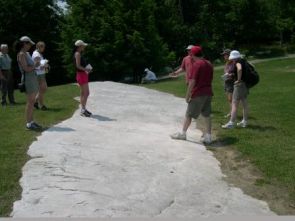 |
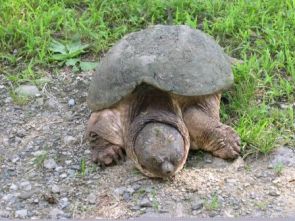 |
| "Geology of the Hudson River Valley" was taught by
Steve Schimmrich (SUNY Ulster County Community College. Here the group observes glacial polish at
Lake Minnewaska. |
Even the non-humans were interested in what was going on. |
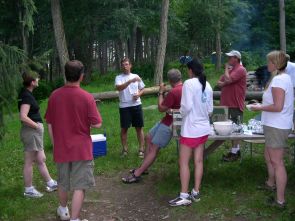 |
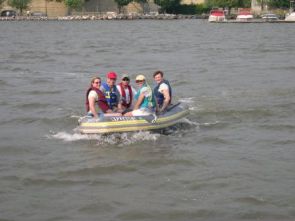 |
| Barbeque at Blackrock Forest |
Michelle Land (Pace University), Stuart Belli (Vassar College), Seawolf crew member, Jill Schneiderman (Vassar College) and Zywia Wojnar (Bard College) zodiaked to shore. |
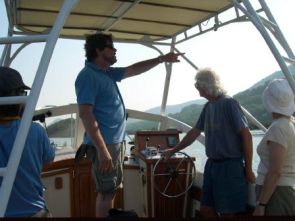 |
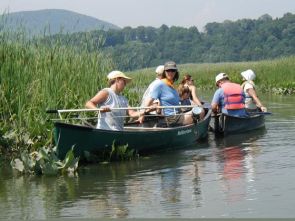 |
| John Cronin (Pace University and Rivers and
Estuaries Center) spoke aboard the Trust. |
Jill Schneiderman collected a sediment sample from Constitution Marsh. |
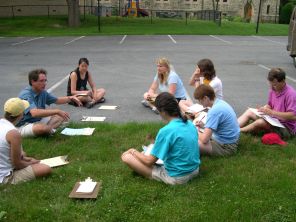 |
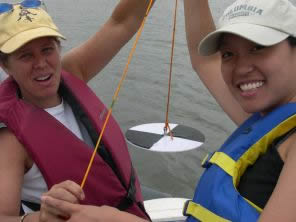 |
| Alan Berkowitz (Institute of Ecosystem Studies) led the group in a challenge during his "Human Settlements as Ecosystems" lesson in Poughkeepsie, New York. |
Stuart Findlay (Institute of Ecosystem Studies) discussed "Littoral Zone Ecology". Shown above, Jill Schneiderman and Lisa Son (Barnard College) learned to use a secchi disk to measure turbidity in the vicinity of Esopus Meadows Point. |
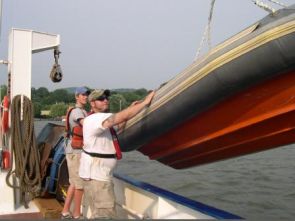 |
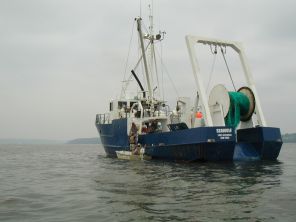 |
| Seawolf crew prepare to lower the zodiak. |
Boarding SUNY Stony Brook's R/V Seawolf |
| |
|
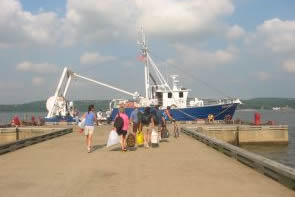 |
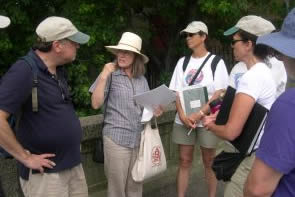 |
| Group heading to the Seawolf at Piermont Pier in Rockland County. |
Marilyn Power (Sarah Lawrence College) led a walking tour of Yonkers, and discussed "The Political Economy of the Hudson River Environment: The Case of the Yonkers Waterfront." |
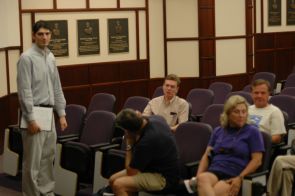 |
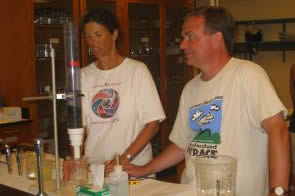 |
| Richard Carbonaro and Kevin Farley (both of Manhattan College) presented on "New York City Water Supply" |
Margie Turrin (Lamont-Doherty Earth Observatory) and Ted Eisemeier won the filtration system competition at Manhattan College's lab |
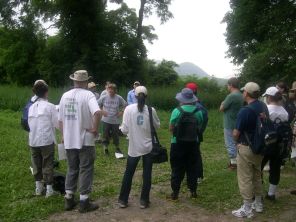 |
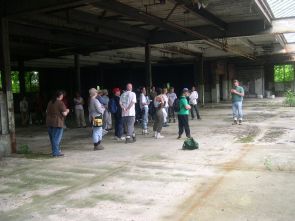 |
| Students of Lucy Johnson (Vassar College) reversed roles and taught River Summer participants about the estuary, fisheries, the ecosystem, pottery, and the history of the Denning's Point women. |
John Cronin gave a tour of an abandoned building at Denning's Point |
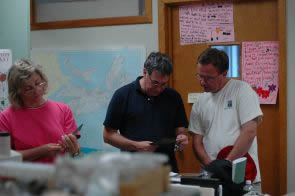 |
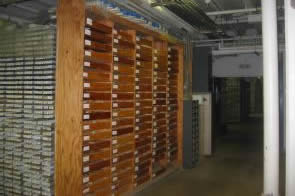 |
Susan Golz (SUNY Rockland Community College), Dan Farkas (Pace University) and Ted Eismeier worked at Lamont-Doherty Earth Observatory to identify types of
pollen prepared on slides by Dorothy Peteet. |
This large core repository at Lamont-Doherty Earth Observatory stores core samples for future research. |
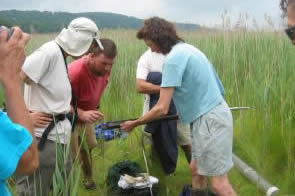 |
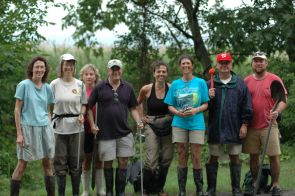 |
| Dorothy Peteet (Columbia University) led an expedition to teach about "Piermont Marsh: Wetland Brackish Hudson Ecology and Paleoecology" |
Post-marsh group from left to right: Dorothy Peteet, Patricia Grove (College of Mount Saint Vincent), Susan Golz, Dan Farkas, Ellen Pollina, Margie Turrin, Ted Eismeier, and Tim Kenna |
| |
|
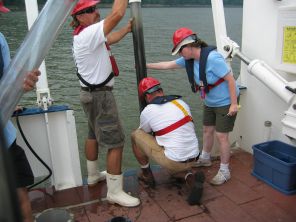 |
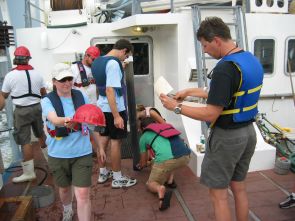 |
| Faith Kostel-Hughes (College of New Rochelle) helped Tim Kenna and Neal Stark (Chief Mate SUNY Stony Brook R/V Seawolf) to bring the core on deck.
|
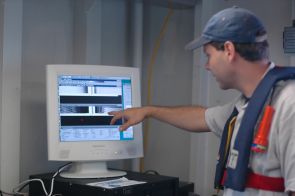 |
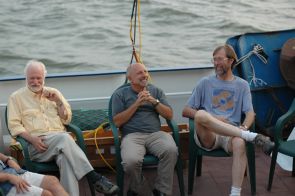 |
Frank Nitsche (Lamont-Doherty Earth Observatory)
explains data on board the Seawolf lab |
Jeffrey Miller (Pace Law School), Roger Panetta (Marymount College of Fordham University), and Steve Stanne (NYC DEC) |
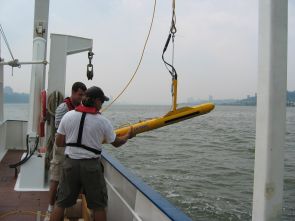 |
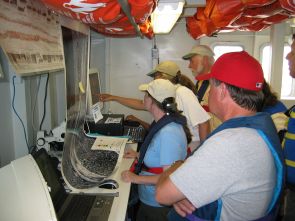 |
Preparing sonar equipment |
Interpreting sonar data |
|
| Roger Panetta and Elizabeth Hutchinson co-taught "Panoramas and See Fever: Visualizing the Hudson". Participants not only learned about history, but looked at the present landscape, both NJ and NY shores, and made their own panorama on the computer using digital images.
|
| |
|
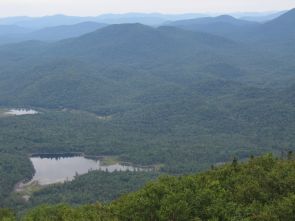 |
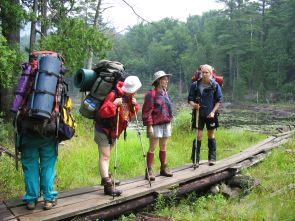 |
| Jimmy and Sally Lakes as viewed from the fire tower on top of Mt. Adams. |
(unknown), Zywia Wojnar, Ann Davis (Marist College), and Ariel Falconer (Colgate University Outdoor Ed Staff) |
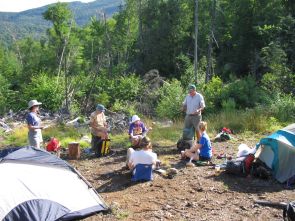 |
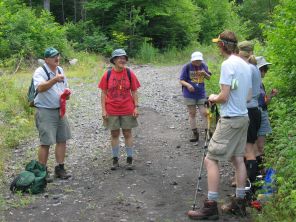 |
| Led by Bruce Selleck (Colgate University), participants set up camp in the Adirondack Mountains. |
Bruce Selleck (left) taught tree identification and GIS technology. Shown from left to right from Bruce is Lucy Johnson, Zywia Wojnar, Ann Davis, Ariel Falconer, and Gavin Gregory (Colgate University Outdoor Ed Staff). |
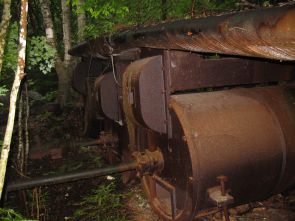 |
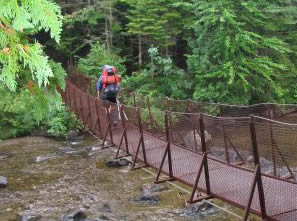 |
| Remnants amidst the forest of a water driven air compressor as part of the McIntyre blast furnace. |
Participants crossed the Hudson River on this bridge, one at a time. |
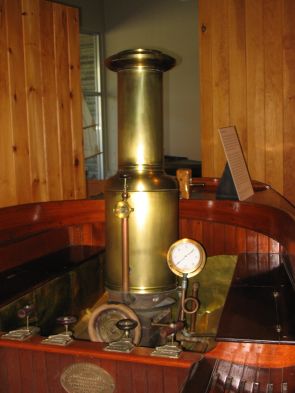 |
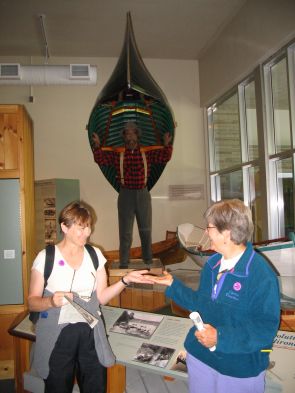 |
| Participants toured the museum overlooking Blue Mountain Lake |
Zywia Wojnar (Bard College) and Lucy Johnson (Vassar College) |
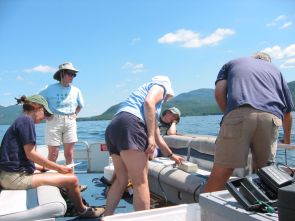 |
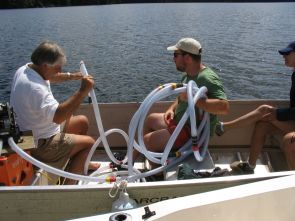 |
| Sampling was done on Lake George. |
Larry Eichler, Research Scientist at Darrin Fresh Water Institute, and Tim Kenna used a water tube to collect a sample from Lime Kiln Lake. |
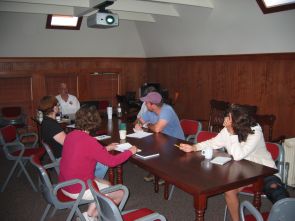 |
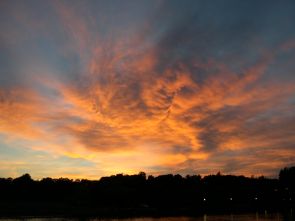 |
| A lesson on the various types of algae and zooplankton was given by Jim Harrison, Postdoctoral Research Asssociate at Darrin Fresh Water Institute, which prepared the "students" to identify them on their own on the final day of River Summer. |
Each of the five modules ended with a group wrap-up and assessment, and participants had a chance to reflect on the days gone by. |
top |

